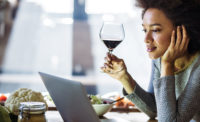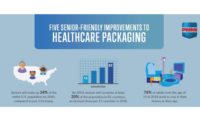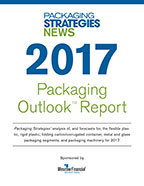Web exclusive
Elder boom: Appealing to the senior demographic

An unparalleled demographic shift is taking place worldwide as record numbers of people are living longer—sometimes much longer. For food and beverage makers and retailers, this change opens up huge and exciting opportunities to reach a rapidly growing cohort with customized products and packaging targeted directly to its wants and needs. Smart messaging aimed at 'Elder Boomers' raises the ante even higher.
The numbers make a compelling case. The first Baby Boomers reached age 65 in 2011, and the rest will be following suit at a rate of about 8,000 a day until 2029, notes AARP. In developed countries, a jump of 51 percent in the number of people age 65 and older is forecast by 2030 according to the U.S. National Institute on Aging (NIA). In the U.S., the number of residents age 90 and older is set to increase to a projected 9 million, a rise of nearly 2 million by 2050, notes a U.S. Census Bureau report commissioned by NIA.
Sizing and packaging
These seniors are one reason the nutraceutical industry is growing so rapidly. Sales of probiotic and prebiotic foods, vitamins, supplements and other ‘medicinal meals’ are expected to push into $75 billion-plus territory by 2018, according to Research and Markets.
Manufacturers seeking to increase sales to seniors should consider downsizing portion sizes and quantities, given that “about 29 percent (11.3 million) of non-institutionalized older persons live alone,” according to a profile of older Americans from the U.S. Department of Health and Human Services. This demographic prefers smaller size products since they can't always consume the contents of a large container before the food or beverage goes bad.
Smaller multi-serving packaging, like 1-liter and 1.5-liter cartons, is better suited to senior shoppers.
Additionally, older consumers prone to arthritis and other dexterity challenges, such as holding and pouring from large containers, appreciate ergonomic, easy-open caps and closures.
Creating products with seniors in mind is another smart way of opening a door into this lucrative market. For instance, in Japan, in 2013, the ubiquitous baby food company Kewpie introduced a selection of soft, deli-style foods aimed at seniors who may find it challenging to chew tougher food. According to The Wall Street Journal, Kewpie’s 'Tender Menu' includes more than 50 items, graded by 'degrees of chewability.' The company expects to earn $28 million in its first three years.
Large letters in design
For companies focused on the senior demographic, making products healthy is just one step. Selling to seniors requires displaying appealing nutritional information like high fiber and low sodium on the packaging in large letters. While those over age 65 comprise only 12.8 percent of the U.S. population, "they account for roughly 30 percent of all visually impaired individuals," notes a report by the U.S. Centers for Disease Control and Prevention. Struggling to read tiny letters on nutrition labels is a turn-off for older shoppers with bad eyes, so savvy producers print labels in big type. Packages that naturally lend themselves to displaying easy-to-read typography and eye-catching graphics can be designed with broad and/or long panels that communicate clearly with older shoppers.
Marketing to seniors should also include today’s technology. There's a widely accepted misconception that seniors are technophobes. Not true: 74-year-olds are the fastest growing demographic on social networks, according to Forbes. EMarketer claims 60 percent of American seniors are online—as opposed to 80 percent of adults as a whole. And remember, ads can be targeted to senior users. Another thing to consider is that many seniors are on tight budgets, which makes them receptive to cost-saving promotions, also a strategy that works well with web and mobile marketing programs.
Personal packaging
Brands and retailers looking to maximize sales to 'Elder Boomers' can also focus on the size of the packaging seniors carry home—or don't. Older consumers may not be keen on struggling down the sidewalk schlepping giant-sized bundles of cereal, heavy 2-gallon bottles of juice (especially in breakable glass) or arm-straining, 24-bottle packs of spring water. For this crowd, smaller, lighter, easier-to-carry 'personal' packaging is more appealing.
Brands might want to stay on top of e-sales too—because the older you are, the nicer it is to have someone deliver your beverages and broths to your doorstep, sparing you the necessity of grocery shopping on an icy or sweltering day. (Ask Google Search about 'home delivery for seniors' and prepare yourself for close to 25 million hits.) And while Peapod isn't exclusively aimed at seniors, it's worth noting that last year it claims to have delivered more than 23 million grocery orders in 24 U.S. markets.
What kind of marketing message do you want to send to the 'Elder Boomers?’ A 2009 survey by Google and Nielsen showed that 8 in 10 Baby Boomers felt the advertising they see is targeted to younger consumers, and AARP Bulletin has pointed out: “Boomers have the bucks, but advertisers don't seem to care.” Simple, age-appropriate changes that start with packaging and graphics and extend to online and mobile promotions will say ‘we're thinking about you, and we've got your back.’ And they may rack up the sales.
 Suley Muratoglu, vice president, Marketing & Product Management, Tetra Pak Inc., U.S. & Canada, currently runs the company’s presence in core categories, including dairy, beverage and food. Further industry insights from him can be found at www.doingwhatsgood.us. Tetra Pak (tetrapak.com) is the world's leading food processing and packaging solutions company.
Suley Muratoglu, vice president, Marketing & Product Management, Tetra Pak Inc., U.S. & Canada, currently runs the company’s presence in core categories, including dairy, beverage and food. Further industry insights from him can be found at www.doingwhatsgood.us. Tetra Pak (tetrapak.com) is the world's leading food processing and packaging solutions company.
Looking for a reprint of this article?
From high-res PDFs to custom plaques, order your copy today!








